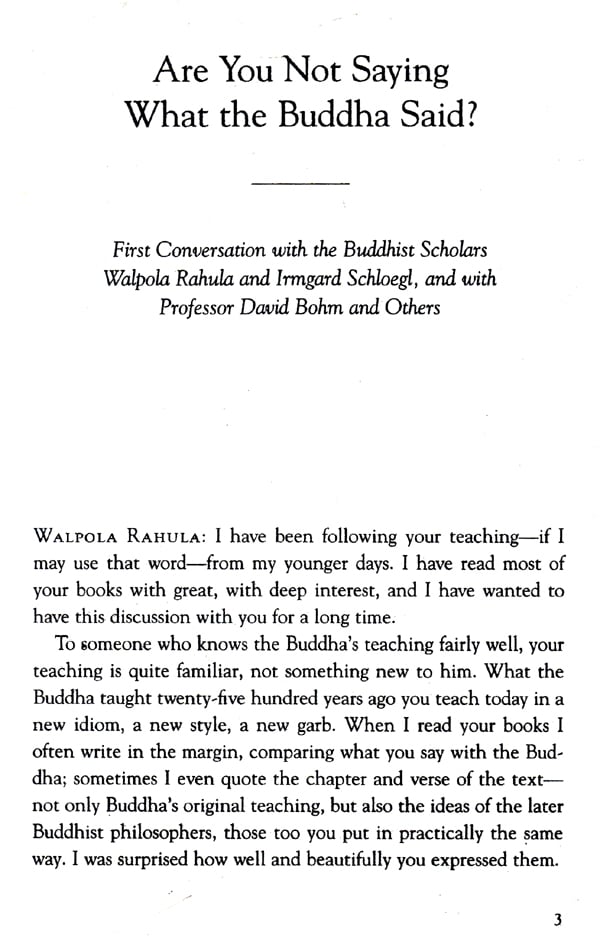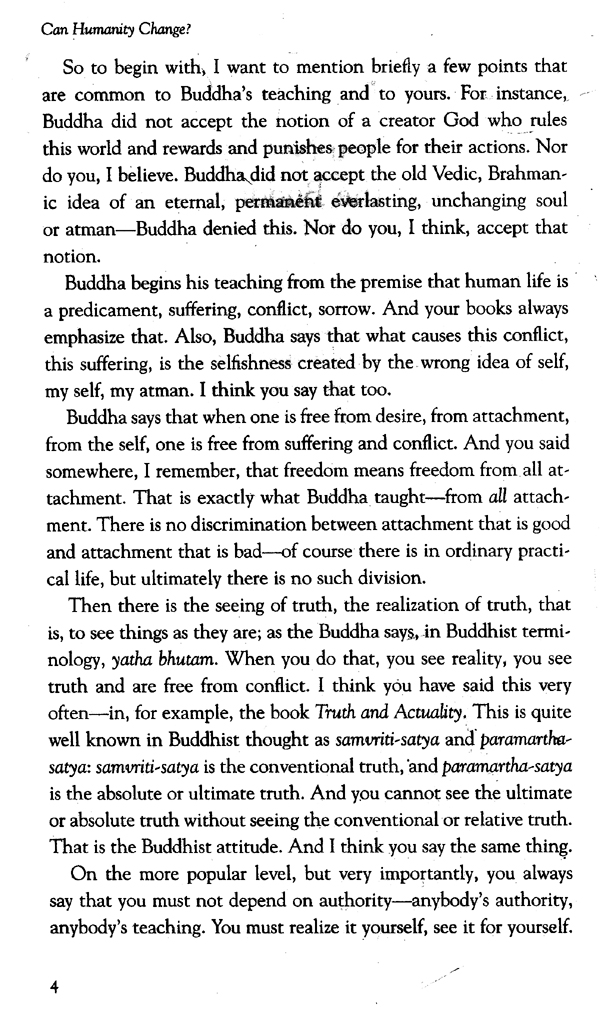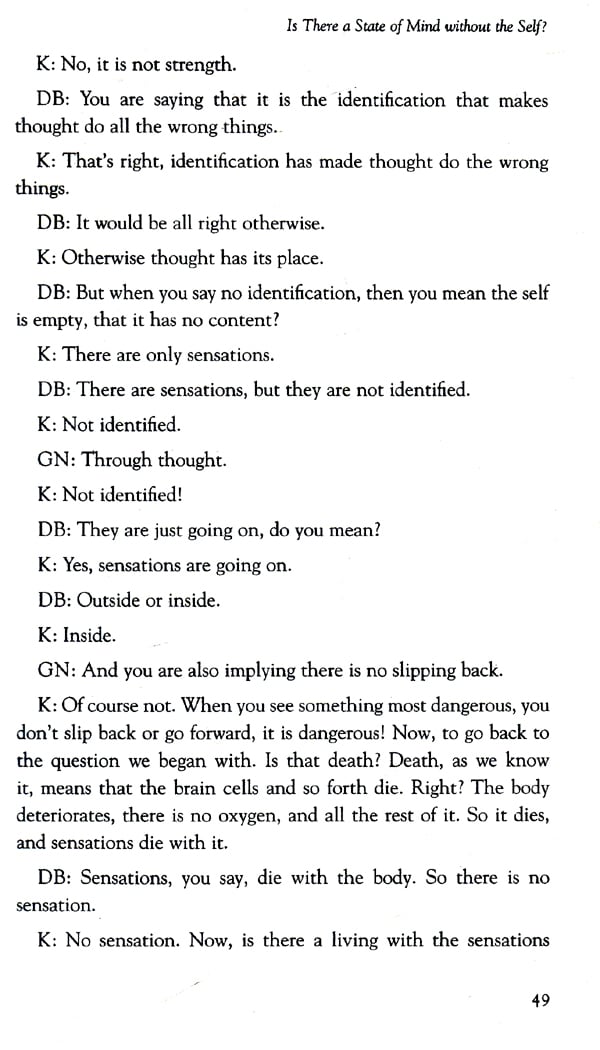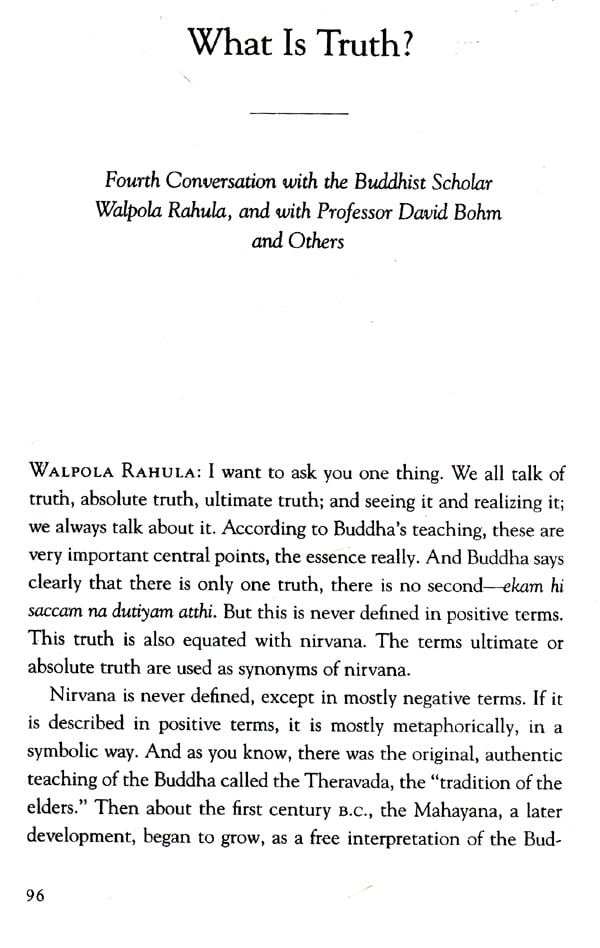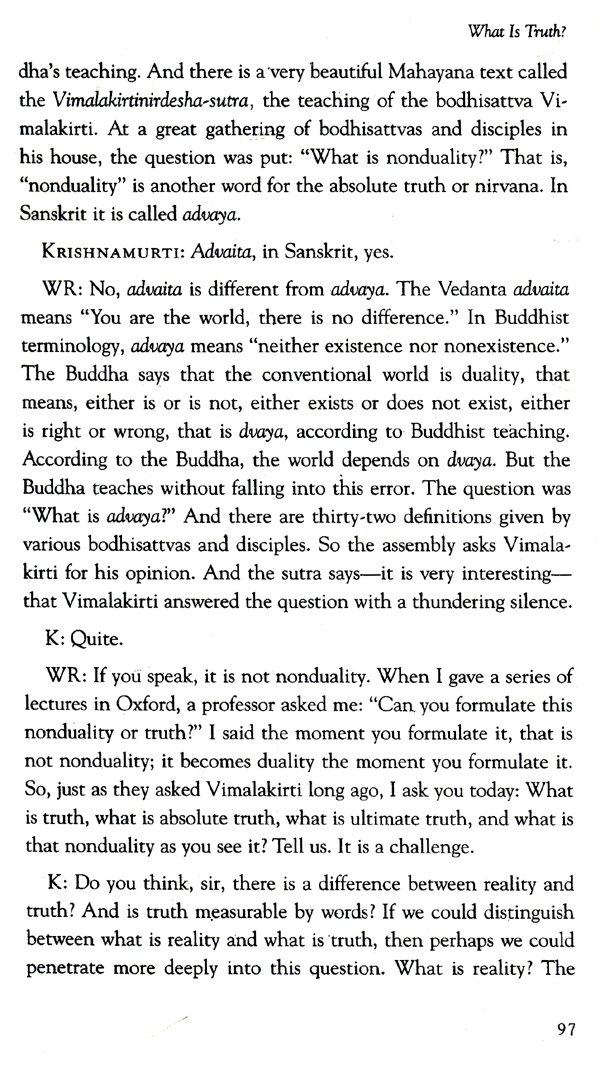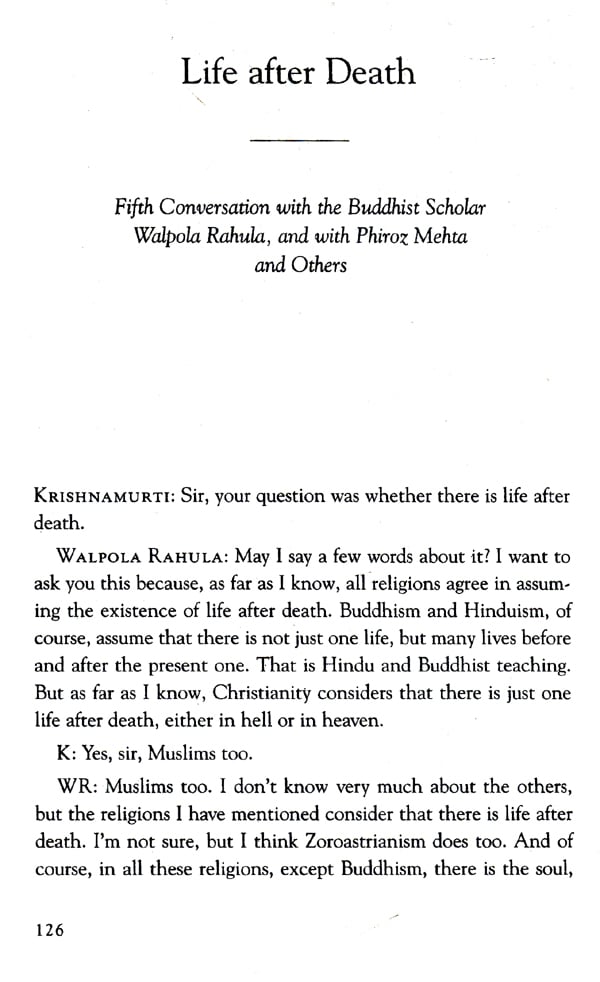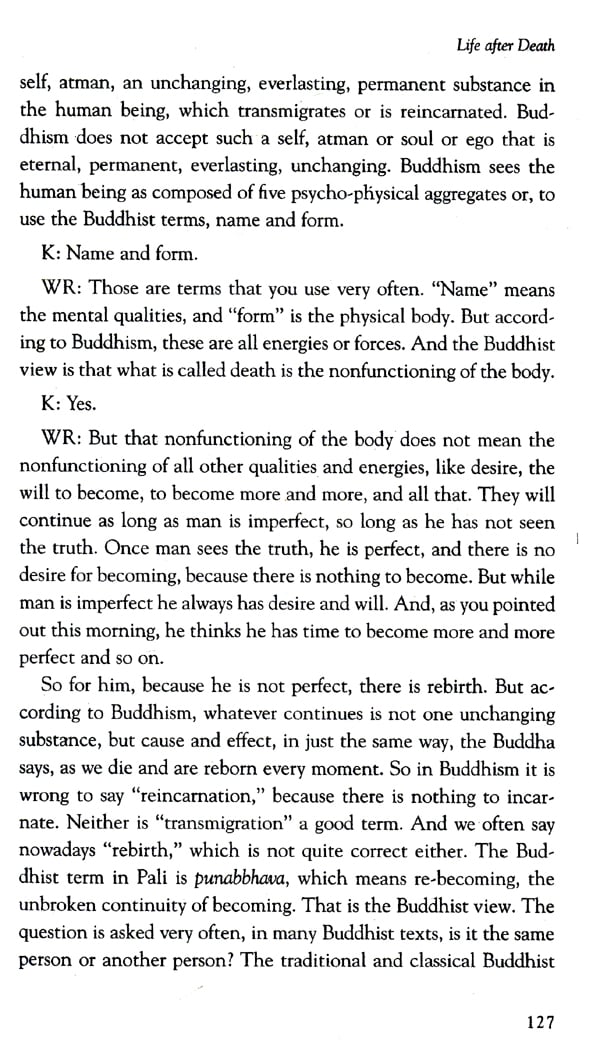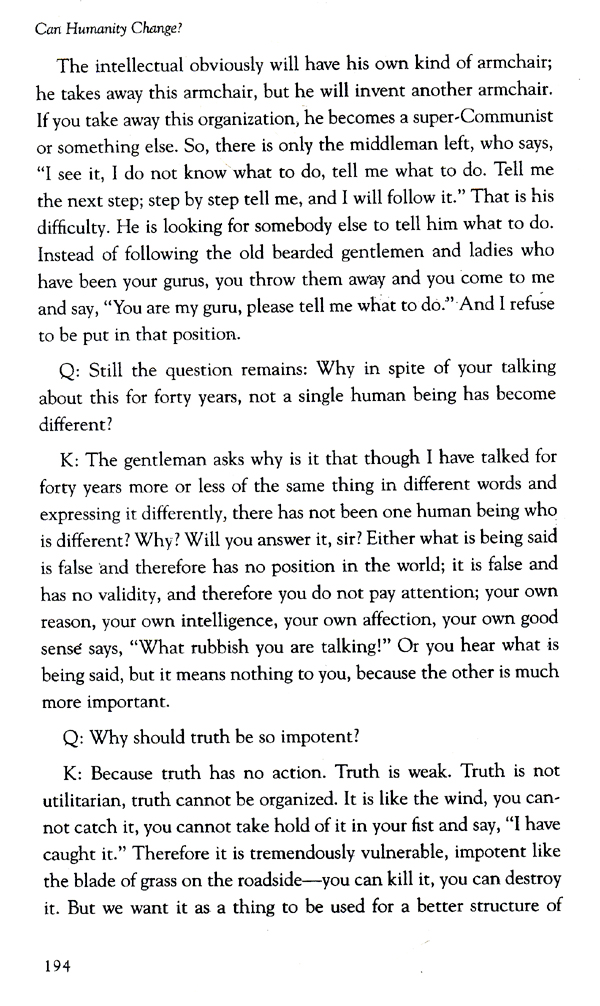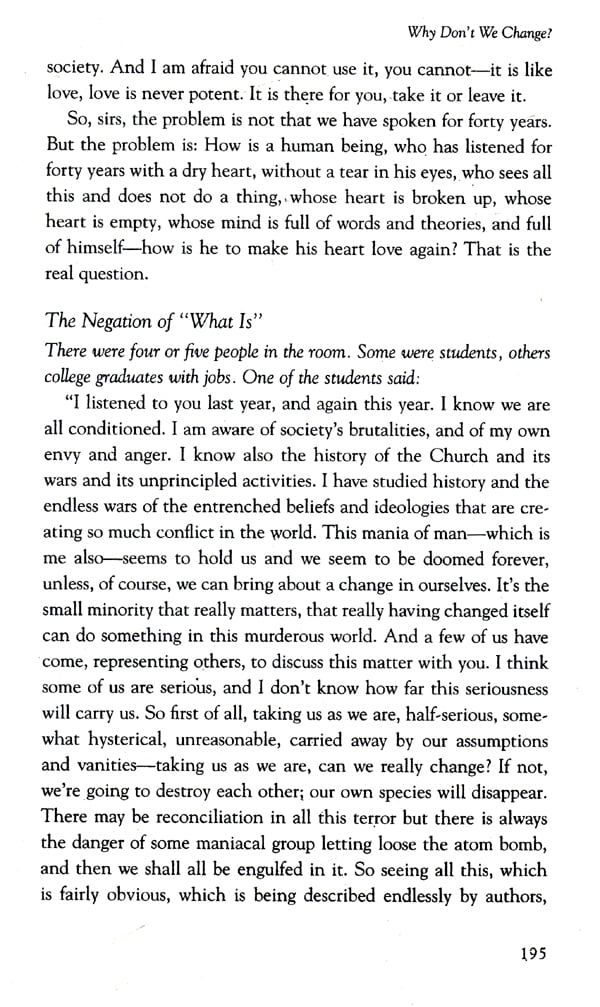
Can Humanity Change? (J. Krishnamurti in Dialogue with Buddhists)
Book Specification
| Item Code: | NAY415 |
| Author: | J. Krishnamurti |
| Publisher: | Krishnamuriti Foundation India |
| Language: | English |
| Edition: | 2007 |
| ISBN: | 8187326573 |
| Pages: | 232 |
| Cover: | PAPERBACK |
| Other Details | 8.50 X 5.50 inch |
| Weight | 270 gm |
Book Description
Many have considered Buddhism to be the religion closest in spirit to J Krishnamurti's spiritual teaching—even though the great teacher was famous for urging students to seek truth outside organized religion. This record of an historic encounter between Krishnamurti and a group of Buddhist scholars provides a unique opportunity to see what the great teacher had to say himself about Buddhist teachings. The conversations, which took place at Brockwood Park in England in the late 1970s, focus on human consciousness and its potential for transformation. Participants include Walpola Rahula, the renowned Sri Lankan Buddhist monk and scholar, author of the classic introductory text What the Buddha Taught.
Is what is happening in the world pointing to the need for a fundamental change in human consciousness, and is such a change possible? This is an issue at the heart of both Krishnamurti's and the Buddha's teaching, and in 1978 and 1979 the eminent Buddhist scholar Walpola Rahula came to Brockwood Park in England to put questions that had occurred to him from his reading of Krishnamurti's books. The future Chancellor of the Sri Lankan University of Buddhist and Pali Studies, Walpola Rahula was an acknowledged authority on both the Theravada and the Mahayana schools of Buddhism. He had lectured at universities around the world, and was the author of the article on the Buddha in the Encyclopedia. Britannica. He had also written a widely known introduction to Buddhism, translated into many languages, called What the Buddha Taught. He was accompanied by Irmgard Schloegl, a well-known teacher of Zen Buddhism and for some years the librarian of the Buddhist Society of London.
Nearly all the conversations, in which the physicist David Bohm and the scientist and author Phiroz Mehta also participated, start with Dr. Rahula raising an issue of crucial importance for any radical change in the way we usually see ourselves, others, life, and death. The nature of personal identity, whether there is a relative truth and an ultimate truth, and the distinction between insight and intellectual understanding are all topics on which he argues that the Buddha and Krishnamurti have said substantially the same things. He also explains to Krishnamurti that in his view the original teaching of the Buddha has over the centuries been in many ways misunderstood and misinterpreted, particularly with regard to the nature of meditation and the form of meditation known as satipatthana, or "mindfulness."
On each occasion, however, instead of discussing whether Dr. Rahula's argument is right or wrong, Krishnamurti moves the debate into quite a different direction. Why, he asks, compare? What is the value of such comparison? Why bring the Buddha into the discussion between the two of them? Courteously, and with a lightness of tone, Krishnamurti challenges Walpola Rahula to say whether he is taking part in the conversation as a Buddhist or as a human being, whether he considers that humanity is in any sense progressing psychologically, what he understands by the word "love."
Dr. Rahula continues, however, in most of these conversations to draw parallels between what the Buddha has said and what Krishnamurti is saying, so that a reader interested in that inquiry will find much of interest. But at another level there is something quite different going on. Time and time again after describing, say, the role of thought in creating the self, Krishnamurti will ask Dr. Rahula and the other participants: Do you see that? The word see is rightly emphasized, because the seeing in question is clearly meant to be seeing with such depth and clarity that consciousness and simultaneously action are radically transformed. It is also no-table that Krishnamurti unfolds his argument by a series of questions, some of which he wants his listeners to allow to sink in rather than to answer a distinction they do not always find it easy to make.
**Contents and Sample Pages**

